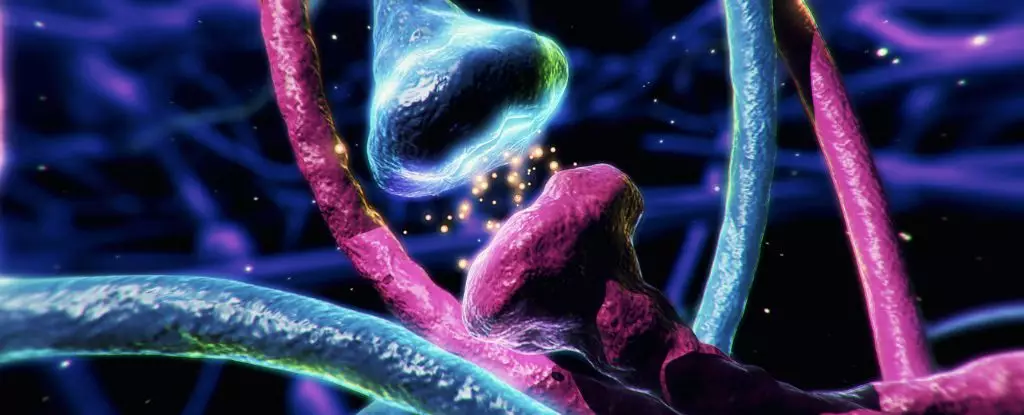For decades, dopamine has been celebrated as a central player in the brain’s reward system, motivating behaviors and reinforcing pleasurable experiences. Traditionally, scientists envisioned dopamine functioning like a broadcasting megaphone—release of this chemical messenger diffused widely across the brain, broadcasting signals to numerous distant cells. This perspective solidified the idea that dopamine’s primary role was to generate broad, sweeping signals related to motivation and reward, orchestrating complex behaviors on a large scale. While this model has greatly advanced our understanding, emerging research challenges its simplicity, revealing a much more nuanced and intricate picture.
Recent breakthroughs suggest that dopamine’s mode of communication is not solely a slow, widespread broadcast but also involves rapid, localized whispers. These quick, targeted signals could occur within milliseconds and influence neighboring neurons directly, without diffusing extensively. Such precise signaling mechanisms are vital, as they allow the brain to modulate neurons selectively, enabling finer control over behaviors and mental states. If this localized dopamine communication proves widespread, it might be the missing piece in comprehending how the brain accomplishes its remarkable diversity of functions with incredible specificity.
This paradigm shift isn’t just a matter of academic curiosity; it has profound implications for understanding disease and developing targeted therapies. The realization that dopamine operates on both a broad and a micro scale suggests that disorders such as Parkinson’s, schizophrenia, and addiction could stem from disruptions in these delicate, localized signals, not just the overall dopamine levels previously targeted by medications. Recognizing the dual nature of dopamine’s signaling expands our capacity to innovate treatments tailored to restore precise neural communication.
The Dynamic Dance of Dopamine in the Brain’s Motor and Reward Circuits
Dopamine’s role varies dramatically depending on where it acts and how it is released. In the bloodstream, it’s primarily involved in regulating cardiovascular functions and immune responses—a far cry from its neurotransmitter functions in the brain. Within neural circuits, especially in regions like the striatum, dopamine orchestrates behaviors related to movement, motivation, and reinforcement. This brain area, nestled in the basal ganglia, is heavily populated with dopamine-producing neurons, endowing it with a crucial role in motor control and addictive behaviors.
Here’s where understanding the precision of dopamine signaling becomes vital. The neurons within the striatum don’t just receive dopamine uniformly; instead, they are subject to both diffuse and highly localized signals. This duality likely allows the brain to encode complex messages—rapid responses to immediate stimuli, alongside slower, sustained signals that influence overall motivational states. For example, a quick, localized dopamine burst could trigger a specific movement or reinforce a particular behavior, while slower dopamine diffusion might underpin broader states such as sustained motivation or mood regulation.
This nuanced signaling is essential to our daily functioning. It involves a delicate balance: too little dopamine, as in Parkinson’s disease, causes debilitating movement issues; too much or misdirected dopamine, as seen in schizophrenia or addiction, can lead to hallucinations, compulsions, or substance dependence. Discovering that dopamine can operate on both fast, localized scales and slow, widespread scales offers new avenues for fine-tuning treatments—potentially restoring normal behavior by targeting very specific neural pathways rather than blanket dopamine levels.
Implications for Disease and Future Research
The latest research not only challenges foundational assumptions but also ignites hope for more precise interventions in neuropsychiatric disorders. Currently, many treatments aim to modulate dopamine broadly—either boosting it in Parkinson’s or dampening it in schizophrenia and addiction. However, this approach often results in unwanted side effects because it impacts the entire network indiscriminately.
If scientists can harness the knowledge of dopamine’s localized, short-range signaling, it could revolutionize how we approach these diseases. For instance, future therapies might precisely enhance or inhibit dopamine release at specific neural synapses, offering greater efficacy with fewer side effects. Moreover, understanding these micro-signals could clarify why some patients respond differently to medications, leading to more personalized and effective treatment strategies.
The research conducted by teams at the University of Colorado and Augusta University highlights the brain’s incredible complexity. By directly visualizing dopamine release in live animals, scientists have uncovered evidence that its signaling is far more intricate than previously believed. These small, rapid dopamine whispers could be the key to unlocking how our brains integrate quick reflexes, learning, and emotional regulation—all in real time. This discovery pushes neuroscience beyond the simplistic models that dominated for decades, emphasizing instead a system that is both elegant and profoundly dynamic. As research progresses, embracing this complexity offers hope for groundbreaking advances that could transform mental health treatment and deepen our understanding of what makes us human.

